How to Do Nothing with Nobody All Alone by Yourself (3 page)
Read How to Do Nothing with Nobody All Alone by Yourself Online
Authors: Robert Paul Smith

BOOK: How to Do Nothing with Nobody All Alone by Yourself
2.48Mb size Format: txt, pdf, ePub
HTDN_21a
Keep rolling all the way to the top and then over, then pull at the lump until it's good and tight.
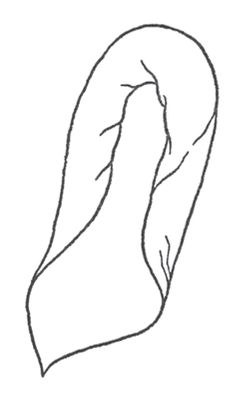
HTDN_21b
There were a couple of fairly idiotic things we used to do when we were just sitting around in the grass, which you might find fun. First, how to make a squawker out of a blade of grass. Get a good wide blade, put it between your thumbs like this, and blow. It makes a pretty loud noise, and you can make the noise higher or lower depending on the width of the blade and how tight you make it.
HTDN_22
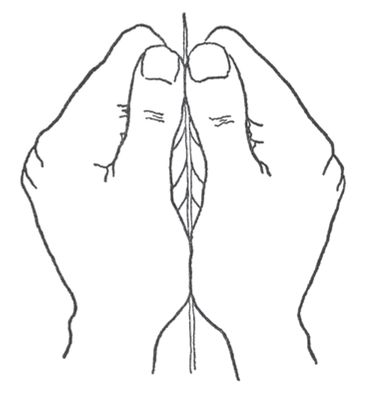
Also, sprawling on the grass you're sure to find dandelions. Everyone knows about blowing the white feathery things off, but one thing we used to do was to take the stem, make a slit with our thumbnail at one end, and pop
it in and out of our mouths until the split pieces curled up like this.
it in and out of our mouths until the split pieces curled up like this.
HTDN_23a
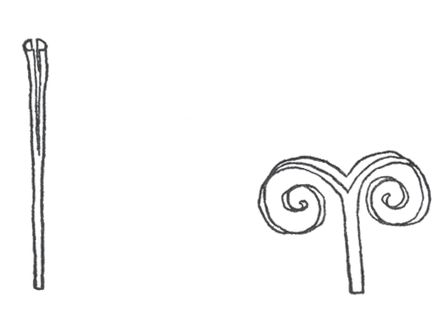
Like I say, it's fairly idiotic, but kind of fun. And we're not through with the dandelion yet. If you pinch off one of the leaves at the stem, then push your thumbnail in it about an inch above, a little way in but not all the way through, you can pull the two sections apart leaving the little white threads in between like a little violin. The trick of course is to see how long you can get the strings without busting them, and how many of them.
HTDN_23b
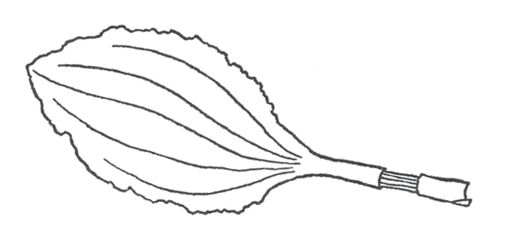
You may or may not know about burrs, and what you can do with them. I'm not going to waste a lot of time telling you how to find a burr bush. The way we found them was we'd be walking through some brush, and if you do, then burrs find you. They'd be stuck to our sweaters, our stockings, everywhere. They feel sticky to the touch, but they're not. They have dozens, maybe hundreds of little tiny hooks all over them, with very fine points, so fine they stick right into your skin without hurting you.
HTDN_24a
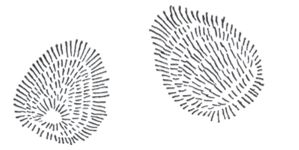
Burrs will stick to anything, including other burrs. You can shape them into any shape you want. We used to make baskets out of them, line them with green leaves and use them to carry berries home in.
HTDN_24b
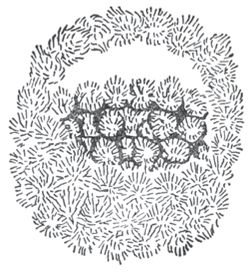
Sooner or later, however, what we did with burrs was throw them at each other. If they get into a girl's long hair, they can be a nuisance to get out, and don't ever throw a whole ball of them. They can hurt. There's another kind of burr, shaped like this:

We never found a use for them, but they were kind of nice to look at. By the way, in the old days, when my grandfather was a kid, these were used for finishing off homespun woolen cloth, to bring up the nap.
You may have noticed by now that the things in this book don't come in any sort of order; that some of the things I've told you about are for indoors, some for outdoors, some for spring and some for fall and some for winter: as I told you before, you're not supposed to do all the things in this book in order: when you've got the spool, build the spool tank. When you've got the burrs, make a burr basket. I think the best way to use this book is just to read it through once, and then put it somewhere where you can find it when you want it. And then one day, when you've got nothing special to do, hunt out an old handkerchief and make the parachute. Or find a button and make the buzz saw. But read the book through once. At the back, I'll put an index so that you can find out what you want when you want it.
Â
One thing you're sure to have any old time is a pencil; and here are two things we always did with pencils, as soon as we owned a pocketknife. Right now, before I tell you about the pencils, let's have a little straight talk about a knife.
I
don't know how old you have to be before you get a pocketknife; that's up to your father. If you ask your mother, it'll probably turn out that
she
thinks you ought to be twenty-one before you can have one. I think you'll be able
to work out something reasonable with your father. Well, let's assume you've got the knife. Now, a Boy Scout knife is swell for mumbly-peg, a game which I'll tell you about later. But for whittling, and for all sorts of
making
things, a plain old-fashioned penknife is the best. Personally, I like a small knife. You can hold it better and control it better. It's my opinion that all you need in a penknife is one, or at most, two blades. The kind I like has a horn handle, and the blades are shaped like the one on this page. This one is drawn about full size. (Of course you'll never have both blades open at onceâThis is just to show you the kind of knife.)
I
don't know how old you have to be before you get a pocketknife; that's up to your father. If you ask your mother, it'll probably turn out that
she
thinks you ought to be twenty-one before you can have one. I think you'll be able
to work out something reasonable with your father. Well, let's assume you've got the knife. Now, a Boy Scout knife is swell for mumbly-peg, a game which I'll tell you about later. But for whittling, and for all sorts of
making
things, a plain old-fashioned penknife is the best. Personally, I like a small knife. You can hold it better and control it better. It's my opinion that all you need in a penknife is one, or at most, two blades. The kind I like has a horn handle, and the blades are shaped like the one on this page. This one is drawn about full size. (Of course you'll never have both blades open at onceâThis is just to show you the kind of knife.)
HTDN_27

Now, here's something else that you're just going to have to argue out with your mother; I did with my mother, my kids did with their mother. A sharp knife is safer than a dull knife. A sharp knife cuts more
easily, you don't have to use as much force on it, and you can control it. Nobody can do good work with a dull knifeâand ask any carpenter, nobody can do safe work with any dull tool.
easily, you don't have to use as much force on it, and you can control it. Nobody can do good work with a dull knifeâand ask any carpenter, nobody can do safe work with any dull tool.
HTDN_28
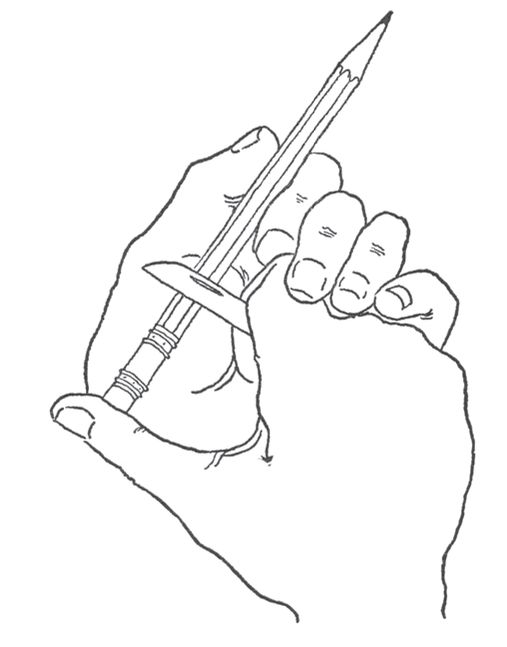
Now, it's got to be a good knife to be sharp. Nobody can put a good edge on a poor knife. A good one will cost more than a cheap one, but it's worth it. It'll take a good edge, it will hold it, and it will last practically forever. When I was a kid, we all thought the only good knife was a Case knife. They still make them, they're still good knives; there are lots of other good knives, but I know about Case. You should learn how to sharpen a knife. For that you need an oilstone. We used to sharpen knives by taking a flat stone, spitting on it, and then sharpening it, but it isn't as good as an oilstone. There are lots of books that will tell you how to sharpen all kinds of tools. They'll be in your library, but the best way is to get someone who knows how to show you. In any case, the reason I mentioned the Case knife is that ever since I've known about it, the factory has guaranteed that if you will send the knife back to them at any time, they'll sharpen it and send it back to you. And they do a swell job.
Other books
Shana Galen by When Dashing Met Danger
No Moon by Irene N.Watts
Worlds of Edgar Rice Burroughs by Mike Resnick, Robert T. Garcia
Religion 101 by Peter Archer
Lie Down with Dogs by Hailey Edwards
When First They Met by Debbie Macomber
The Sellouts by Henning, Jeffrey
Trapped Under Ice by Schiller, M. J.
Loving Lucius (Werescape) by Moncrief, Skhye
God War by James Axler